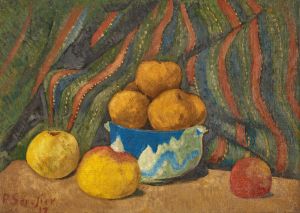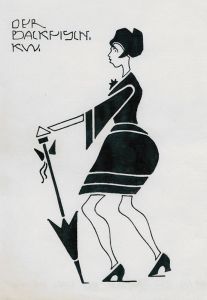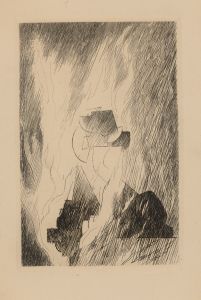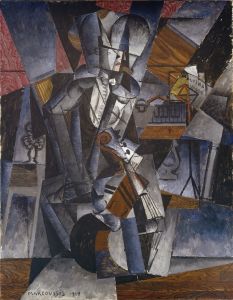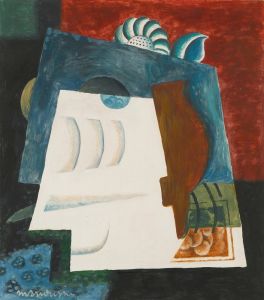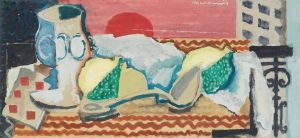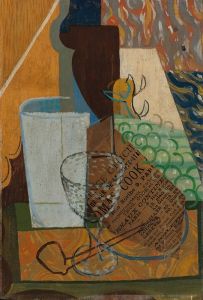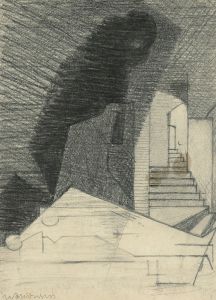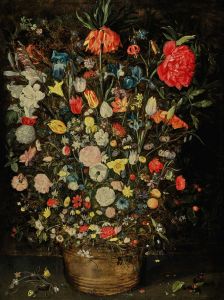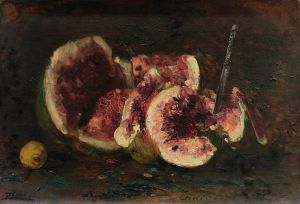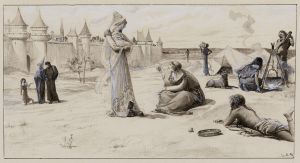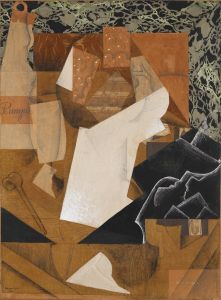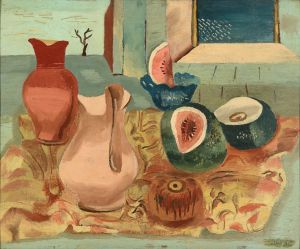
Nature Morte Aux Poissons Or Hyères Ii
A hand-painted replica of Louis Marcoussis’s masterpiece Nature Morte Aux Poissons Or Hyères Ii, meticulously crafted by professional artists to capture the true essence of the original. Each piece is created with museum-quality canvas and rare mineral pigments, carefully painted by experienced artists with delicate brushstrokes and rich, layered colors to perfectly recreate the texture of the original artwork. Unlike machine-printed reproductions, this hand-painted version brings the painting to life, infused with the artist’s emotions and skill in every stroke. Whether for personal collection or home decoration, it instantly elevates the artistic atmosphere of any space.
Louis Marcoussis, born Ludwik Kazimierz Wladyslaw Markus in 1878 in Warsaw, was a Polish-French painter and engraver associated with the Cubist movement. He moved to Paris in 1903, where he became part of the vibrant artistic community that included figures like Pablo Picasso and Georges Braque. Marcoussis initially worked in an Impressionist style but soon became influenced by the burgeoning Cubist movement, which led to a significant transformation in his artistic approach.
"Nature Morte Aux Poissons Or Hyères II" is one of Marcoussis's works that exemplifies his mature Cubist style. While specific details about this painting are scarce, it is consistent with Marcoussis's broader body of work, which often includes still lifes and complex compositions that explore the fragmentation of form and the interplay of geometric shapes. His paintings frequently incorporate musical instruments, playing cards, and other everyday objects, rendered in a style that breaks down the subject into a series of planes and facets.
Marcoussis's work is characterized by a subtle use of color and a meticulous attention to the arrangement of forms. He often employed a muted palette, which allowed him to focus on the structural aspects of his compositions. This approach is evident in "Nature Morte Aux Poissons Or Hyères II," where the subdued colors and intricate design invite viewers to engage with the painting on a deeper level, examining the relationships between the various elements.
The title "Nature Morte Aux Poissons Or Hyères II" suggests a still life featuring fish, possibly set in or inspired by the region of Hyères in France. Hyères, known for its picturesque landscapes and proximity to the Mediterranean Sea, may have provided a backdrop or thematic inspiration for the work. However, without specific documentation or commentary from Marcoussis himself, the exact significance of the location in the title remains speculative.
Marcoussis's contribution to the Cubist movement is notable for its intellectual rigor and aesthetic refinement. He was not only a painter but also an accomplished engraver, and his works in both mediums reflect a deep engagement with the principles of Cubism. His art was exhibited widely during his lifetime, and he participated in several important exhibitions, including those organized by the Section d'Or, a group of artists dedicated to exploring Cubist ideas.
Throughout his career, Marcoussis maintained a close connection with other leading artists and intellectuals of his time. His friendships with figures like Guillaume Apollinaire and Jean Cocteau enriched his artistic perspective and helped to position him within the avant-garde circles of early 20th-century Paris.
Louis Marcoussis passed away in 1941, but his legacy endures through his contributions to Cubism and his influence on subsequent generations of artists. His works are held in numerous public and private collections, where they continue to be studied and appreciated for their innovative approach to form and composition.
In summary, while specific information about "Nature Morte Aux Poissons Or Hyères II" is limited, the painting is representative of Louis Marcoussis's broader artistic achievements within the Cubist movement. His work remains a testament to the dynamic and transformative period of modern art in which he played a significant role.





